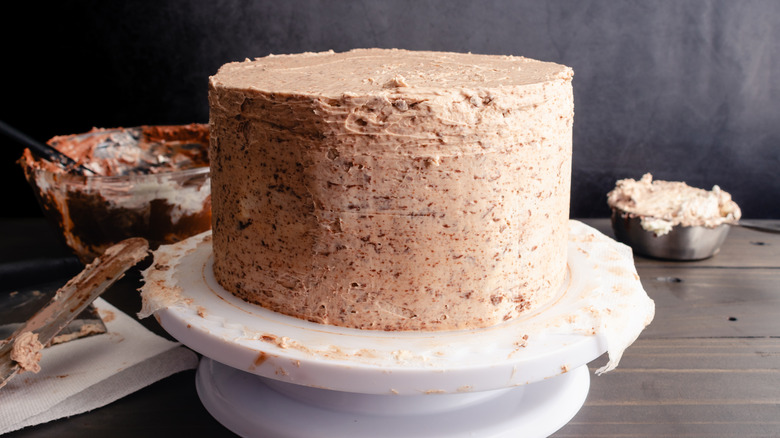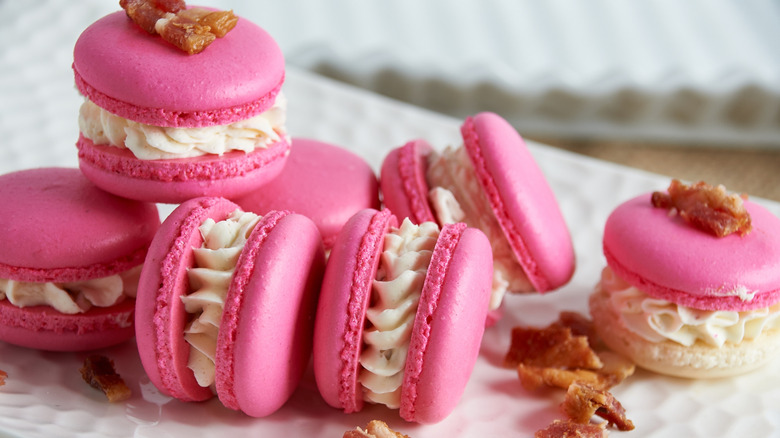How To Flavor Swiss Meringue Buttercream Frosting Without Breaking It
If you're a baker who even occasionally whips up cakes or other treats requiring frosting, you've likely tried your hand at Swiss meringue buttercream. While classic buttercream frosting typically involves creaming together butter and sugar with a splash of flavoring, the slightly more temperamental Swiss meringue starts with egg whites and sugar that get whipped into a meringue, which the butter is then incorporated into.
It's a more complex process, but the results are worth it — at least, that's the opinion of Leanne Tran, who leads a six-person, all-female pastry chef team responsible for daily pastry offerings for Bar Blondeau's dinner service, all-day meals at Le Crocodile, and events at Wythe Hotel. Swiss meringue buttercream is her go-to frosting. "It's much lighter, less sweet, and sturdy when chilled," says Tran. Since the sweetness is dialed back a bit, it gives subtler flavors an opportunity to shine.
However, given the various steps involved in making Swiss meringue buttercream, you might wonder when the ideal time is to incorporate any flavorings — and what you should be mindful of. Luckily, Tran has all the necessary tips depending on what type of flavoring you're adding. A good rule of thumb is to steer clear of too many liquid flavorings that might change the texture of your frosting and make it soupy. "It's best to use dry ingredients to flavor the buttercream like freeze-dried fruit, toasted bay leaves, honey powder, or ground teas," she explains.
Maximize flavor in your meringue
Since adding too much of any additional ingredient runs the risk of making your Swiss meringue buttercream frosting either too dense or too runny, don't go for quantity of flavoring — instead, opt for intensity. For many flavorings, the best time to add them is the stage where you're using a double boiler to dissolve the sugar in the egg whites.
"While the egg whites are heated, add any infusions to steep for maximum flavor," advises Leanne Tran. For an Earl Grey buttercream that packs a punch, for example, you might consider steeping some tea bags in the heated egg whites. This technique can be used for a wide range of flavorings, including items like whole spices or even fresh herbs. To prevent any granules or fragments of ingredients ruining the silky smooth texture of your frosting, you can opt to remove larger pieces after the steeping stage. Others, such as a spoonful of very finely ground tea to really drive home the flavor of an Earl Grey buttercream, can remain.
Now, that's not to say you can't ever use liquid flavorings — they just have to be incorporated at a slightly different stage, once your frosting is stable. "If using vanilla extract or syrups, add it once the last of the butter is added and the buttercream is smooth," recommends Tran. Thicker liquids like salted caramel sauce, a game-changing addition to Swiss meringue buttercream, would fall into this category, as well.

